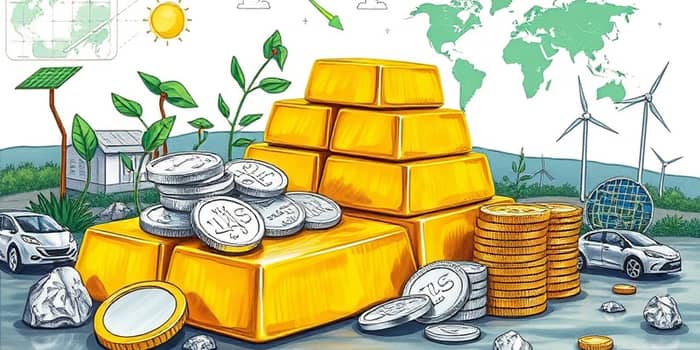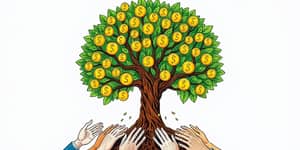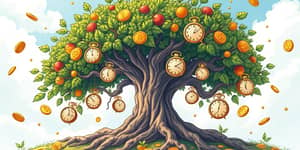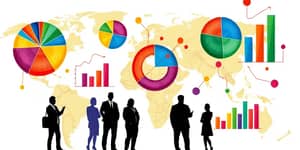In an era of economic uncertainty and rapid technological change, precious metals offer a timeless avenue for preservation and growth.
Overview of Precious Metals in 2025
The first half of 2025 witnessed remarkable gains in the precious metals sector. Gold increased by 26 percent and silver by nearly 25 percent, driven by persistent uncertainties and sticky inflation. Silver even touched its highest level since 2011, briefly surpassing $37 per ounce in June.
Geopolitical tensions, high interest rates, and central bank policies have spurred investors toward safe-haven assets in turbulent times. At the same time, industrial demand for silver and other metals has been bolstered by the accelerating shift to green energy technologies and consumer electronics.
Gold as an Investment
Gold remains the quintessential store of value and is often described as a “quasi-currency.” Unlike industrial metals, its price is driven primarily by monetary policy, central bank activity, and investor sentiment rather than fabrication or end-use.
Central banks continue to accumulate vast holdings, reinforcing gold’s reputation. Bullion-backed exchange-traded products (ETPs) have seen record inflows, even as jewelry demand, particularly in China and India, falls below its ten-year average due to constrained disposable incomes and elevated borrowing costs.
Lower liquidity risk makes gold a stabilizer during market volatility, and its deep, liquid markets ensure investors can enter and exit positions efficiently. On the flip side, competition from digital assets and tokenized gold offerings adds a speculative edge that could cap future gains.
Silver as an Investment
Silver occupies a unique dual role: a precious metal and a critical industrial input. Approximately 59 percent of global silver consumption goes into electronics, photovoltaic cells, and electric vehicle components.
More volatile than gold, silver’s price movements reflect both investor demand and the industrial cycle. A seven-year supply deficit has intensified concerns of a “silver squeeze,” especially as primary mining accounts for only 23 percent of total output.
Silver-backed ETPs attracted 95 million ounces in net inflows during the first half of 2025, lifting global holdings to 1.13 billion ounces—equivalent to over $40 billion in assets. This surge underscores investor confidence amid supply constraints and robust industrial growth.
Beyond Gold and Silver: Platinum, Palladium, & Rhodium
While gold and silver dominate headlines, platinum, palladium, and rhodium offer further diversification, each tied to the health of the automotive sector and specialized industries.
Platinum is prized for diesel catalytic converters and jewelry. Its price is influenced by automotive production trends in Europe and Asia. Palladium, used almost exclusively in gasoline engine converters, has experienced dramatic price surges due to regulatory shifts and supply bottlenecks. Rhodium, the rarest of the group, trades at extreme volatility, reflecting its byproduct status and limited production.
These industrial metals can deliver outsized returns during supply shocks but carry higher volatility and lower liquidity. Their historical data sets are shorter and more prone to rapid swings than those of gold and silver.
Comparative Analysis
Investment Vehicles
- Bars and coins offer tangible ownership but require secure storage and carry premiums.
- Exchange-traded products deliver liquidity and ease of trading for gold and silver.
- Digital tokenization is an emerging frontier, marrying blockchain with metal reserves.
Trends, Risks & Portfolio Strategy
- Diversification beyond gold can harness the industrial upside of silver, platinum, and palladium.
- Watch the tug-of-war between crypto speculation and traditional safe-haven flows.
- Supply constraints and demand cycles in green energy technologies will drive metal prices.
Key 2025 Themes
- Central bank purchases and Fed policy remain pivotal for gold’s trajectory.
- Green energy expansion underpins silver’s dual industrial role.
- Automotive emissions standards regulate platinum, palladium, and rhodium demand.
What Matters to Investors
When constructing a portfolio, investors must align precious metal exposures with their risk tolerance and liquidity needs. Gold offers stability and inflation hedge and wealth preservation, while silver and the industrial metals present higher risk/reward potential tied to global growth trends.
By combining metals across the spectrum—gold’s steady anchor, silver’s industrial leverage, and the niche drivers of platinum, palladium, and rhodium—investors can build a resilient and diversified strategy that stands the test of economic cycles and technological revolutions.
References
- https://www.stonex.com/en/thought-leadership/01-23-2025-precious-and-base-metals-top-themes-in-2025/
- https://www.sharesight.com/blog/track-gold-silver-platinum-palladium/
- https://sprott.com/insights/silver-investment-outlook-mid-year-2025/
- https://www.cbsnews.com/news/what-precious-metal-is-best-to-invest-in/
- https://silverinstitute.org/global-silver-investment-escalates-in-2025/
- https://noblegoldinvestments.com/learn/blog/comparing-all-precious-metals/
- https://www.usfunds.com/resource/precious-metals-crushed-their-commodities-peers-in-the-first-half-of-2025/
- https://mintedassets.com/blogs/minted-assets-blogs/a-comparison-of-the-most-popular-precious-metals










